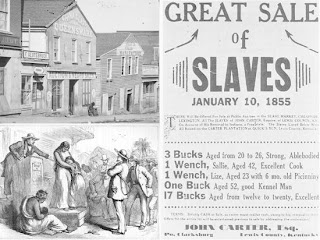Slaves in the 1800s were called property which cost a lot of money. Because they cost so much and they were considered “property” owners felt that they had the rights to give them punishments for anything they felt was wrong of them doing. The idea of slave punishments started in England
Resourse:
Information:
http://library.thinkquest.org/5643/sppe.htm (ThinkQuest: project by students for students)
Picture 1:
http://8crwlsv.pbworks.com/f/slave-punishment-1.jpg (slave being whipped by his owner as punishment)
Picture 2:
http://webspace.webring.com/people/lp/pillory/slave.jpg (slave about to be killed as a punishment)







